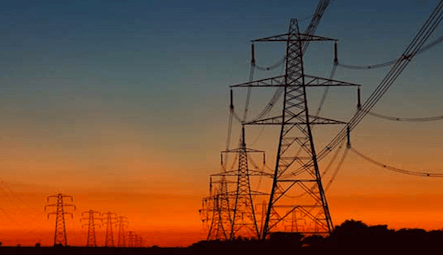The Grid Is Definitely Getting Smarter At ARPA-E
February 29, 2012
on
on

The next generation of energy technologies are brought together at the ARPA-E Energy Innovation Summit held in Washington DC. Companies and research organizations showcase their innovations in categories ranging from Renewable Power Generation to Carbon Capture & Utilization.
We looked at technologies that will help smarten up the power grid.
Smart Wire Grid
The electric grid dates back to the 19th century and isn’t equipped for 21th century energy opportunities and challenges. The transmission system is desperately in need of an upgrade. The high voltage transmission lines that transport energy from power plants to demand centers are often congested.
Congestion destabilizes the system and poses a threat to energy security. Studies suggest that in the United States the annual costs for congestion run into hundreds of millions of dollars [PDF]. A solution would be to build more transmission lines but that’s expensive.
At the same time the grid is battling with congestion only 50% of transmission capacity is utilized because of inefficient use.
To better manage the power flow the company Smart Wire Grid is developing smart wire modules that could increase transmission utilization by 30%. The modules are simple control devices that can be clamped on existing conductors. When the module reaches a particular current level it autonomously switches on increasing impedance. As more modules switch on the power is pushed to alternate low impedance lines.
Autonomous, decentralized grid architecture
Currently the grid is a centralized, one-way network. A few major players supply energy while buyers have little choice.
Georgia Tech envisions a different power generation and distribution system. An energy system in which every participant can generate, store or consume electricity. To help the idea along Georgia Tech is developing a decentralized, autonomous, internet-like control architecture and control software system for the electric power grid.
Smart Outlet
Utilities plan energy production based on predictions deduced from decades of user data. But because there is no real time communication between power generators and power consumers their activities aren’t geared to one another. Smart devices turn the grid into an intelligent network fine-tuning supply and demand. This is necessary as more intermittent power sources like wind and solar are connected to the grid.
Sandia National Laboratories is presenting a smart outlet at ARPA-E which measures real power and reactive power which provides a more accurate measurement of the power potentially available to drive the loads, allowing the outlets to better adapt to changing energy needs and production.
It also measures power usage and the direction of the power flow. This can come in handy in buildings that are mounted with solar panels and feed surplus energy back to the grid. The smart outlet measures how much energy the building needs and –when necessary- blocks the surplus energy from flowing back to the grid.
The outlet has distributed autonomous control freeing the owner for the larger part from monitoring and managing.
For more innovative energy technologies go to ARPA-E
Photo: Technology Industry Association
We looked at technologies that will help smarten up the power grid.
Smart Wire Grid
The electric grid dates back to the 19th century and isn’t equipped for 21th century energy opportunities and challenges. The transmission system is desperately in need of an upgrade. The high voltage transmission lines that transport energy from power plants to demand centers are often congested.
Congestion destabilizes the system and poses a threat to energy security. Studies suggest that in the United States the annual costs for congestion run into hundreds of millions of dollars [PDF]. A solution would be to build more transmission lines but that’s expensive.
At the same time the grid is battling with congestion only 50% of transmission capacity is utilized because of inefficient use.
To better manage the power flow the company Smart Wire Grid is developing smart wire modules that could increase transmission utilization by 30%. The modules are simple control devices that can be clamped on existing conductors. When the module reaches a particular current level it autonomously switches on increasing impedance. As more modules switch on the power is pushed to alternate low impedance lines.
Autonomous, decentralized grid architecture
Currently the grid is a centralized, one-way network. A few major players supply energy while buyers have little choice.
Georgia Tech envisions a different power generation and distribution system. An energy system in which every participant can generate, store or consume electricity. To help the idea along Georgia Tech is developing a decentralized, autonomous, internet-like control architecture and control software system for the electric power grid.
Smart Outlet
Utilities plan energy production based on predictions deduced from decades of user data. But because there is no real time communication between power generators and power consumers their activities aren’t geared to one another. Smart devices turn the grid into an intelligent network fine-tuning supply and demand. This is necessary as more intermittent power sources like wind and solar are connected to the grid.
Sandia National Laboratories is presenting a smart outlet at ARPA-E which measures real power and reactive power which provides a more accurate measurement of the power potentially available to drive the loads, allowing the outlets to better adapt to changing energy needs and production.
It also measures power usage and the direction of the power flow. This can come in handy in buildings that are mounted with solar panels and feed surplus energy back to the grid. The smart outlet measures how much energy the building needs and –when necessary- blocks the surplus energy from flowing back to the grid.
The outlet has distributed autonomous control freeing the owner for the larger part from monitoring and managing.
For more innovative energy technologies go to ARPA-E
Photo: Technology Industry Association
Read full article
Hide full article


Discussion (0 comments)